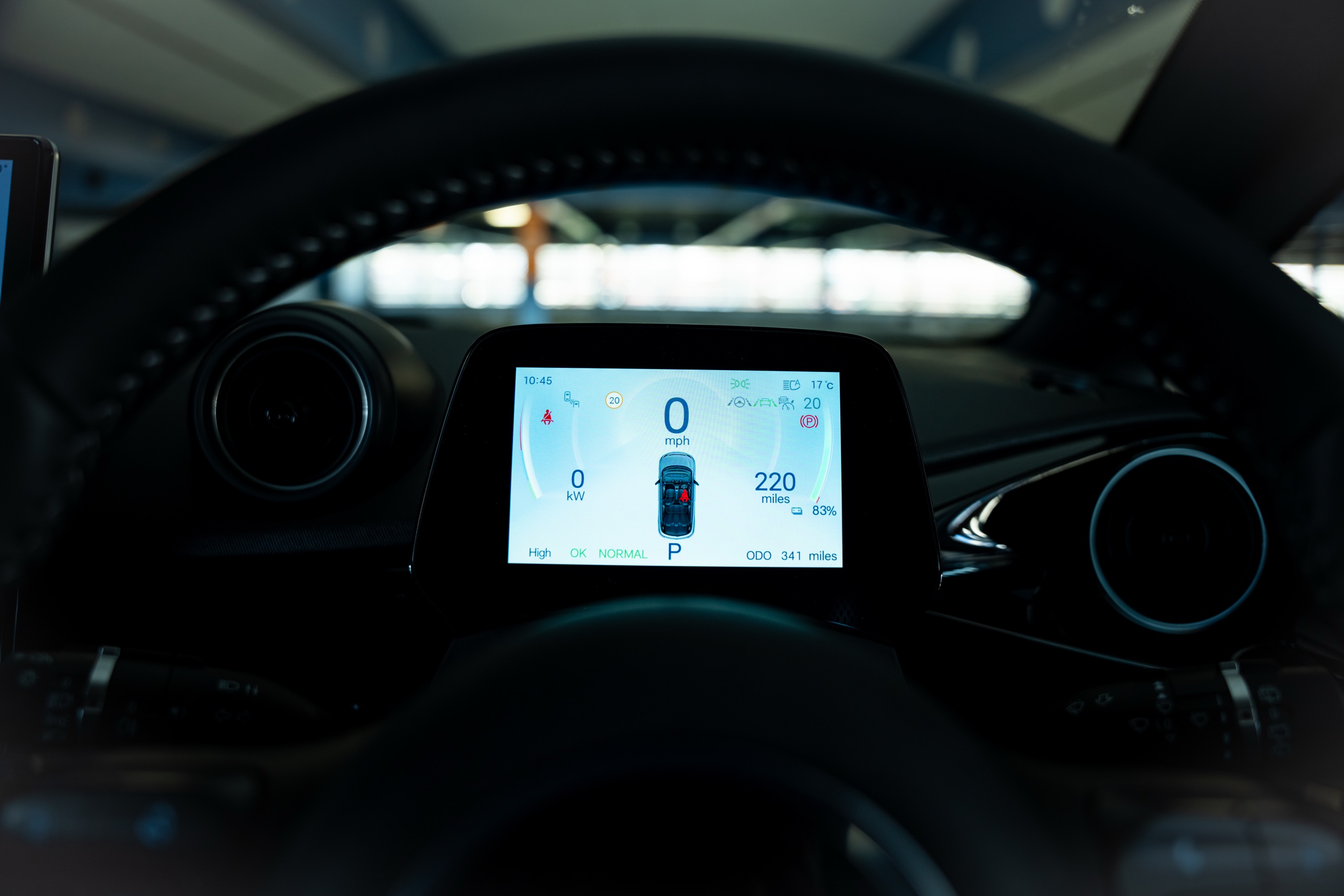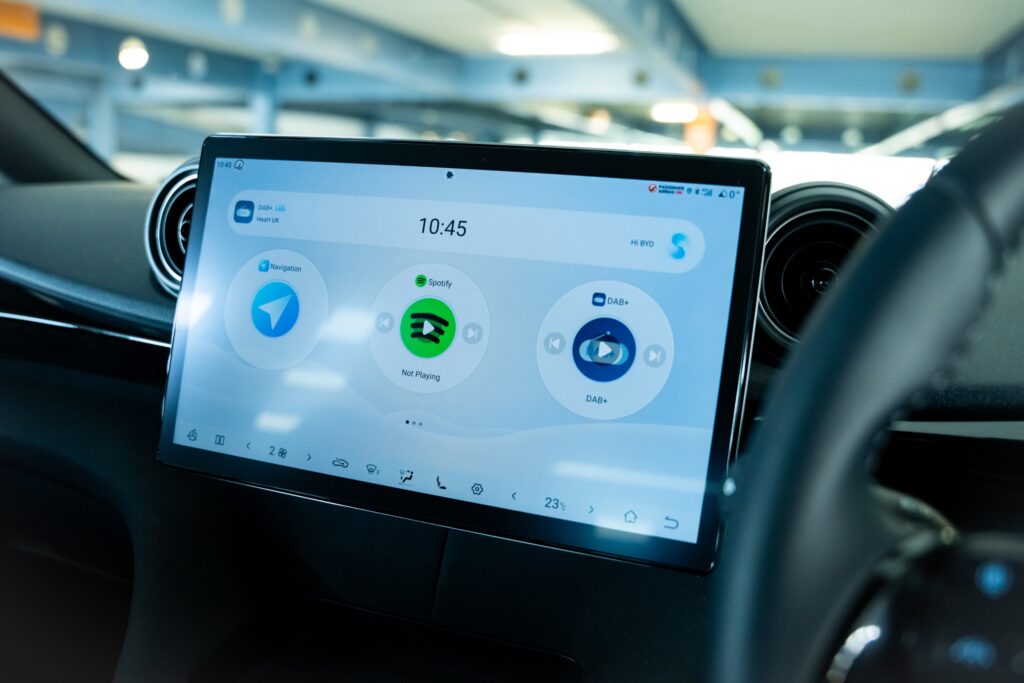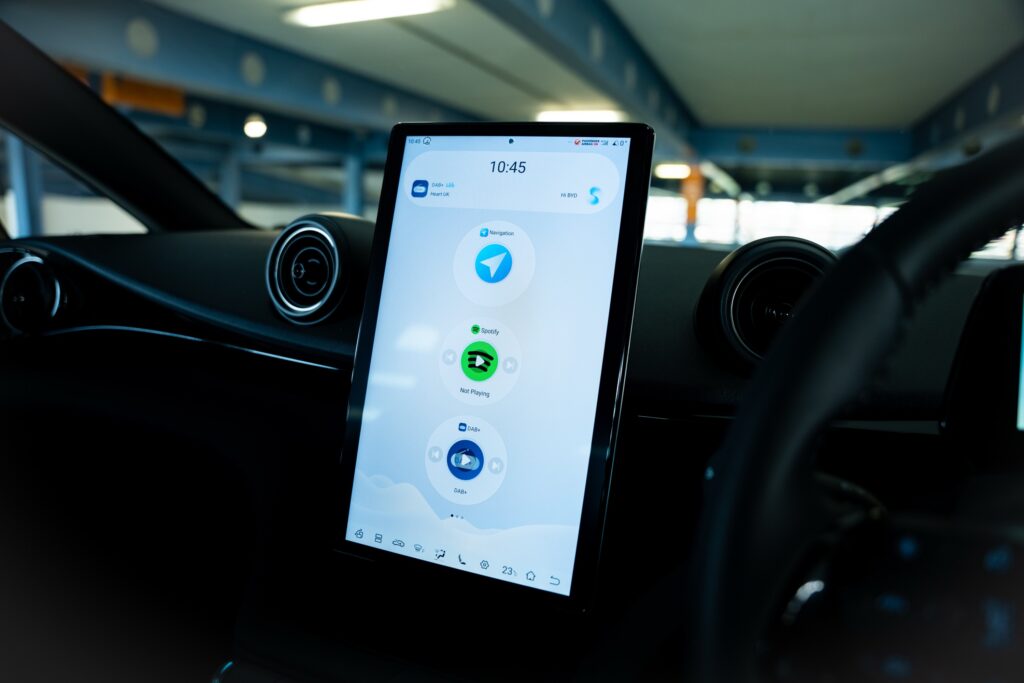Zero to 62 mph (0–100 km/h) takes 7.0 seconds, and the Dolphin tops out at 99 mph (160 km/h). DC fast charging is capped at 88 kW, or 65 kW for the smaller battery, which means it takes 29 minutes to get from 30 to 80 percent state of charge. The performance sounds rather hot hatch-y until you realize the top-spec car weighs 3,655 lbs (1,658 kg), which is a lot for a family hatchback.
It’s quite dark in here.
Credit:
Alex Goy
The interior is fine. There are plenty of neat design quirks, like funky door handles and swoopy surfaces, that make being in there rather pleasant. It’s called the Dolphin, so you can’t expect it to take itself too seriously, but it’s refreshingly fun without seeming tacky. Drivers get a 5-inch display for speed, range, etc., and while it’s a bit on the small side, it’s not the end of the world. Everything else is run through a 12.8-inch touchscreen in the center of the car.
This screen has a party trick
It’s not any mere rectangle, though; it rotates. You can have your map, apps, and whatever else in portrait or landscape at the push of a button. Unless, sadly, you want to use Apple CarPlay. It’s landscape-only for that. It’s fun to show people that you have a wobbly screen, but after messing with it a couple of times, you’ll find your orientation of choice and keep it there.
Rear passengers are taken care of, as are the tall. There’s a 12.2 cubic foot (345 L) trunk, which isn’t the biggest in the world, but it’ll take a small family’s weekly shop and the usual household “stuff” without issue.

Alex Goy
The main instrument panel is sparse but functional.
Alex Goy


All in all, on paper at least, it seems like a pleasant thing that can fit into most families’ lives without too many issues (so long as they have a home charger).
It’s as pleasingly quick off the line as its numbers suggest, which helps in city traffic, and its electric insta-torque means overtaking on the highway isn’t an issue, either. Of course, there are drive modes to play with—Eco, Normal, Sport, and Snow—but to be honest, leaving it in Normal and cruising around is probably what you’ll end up doing the most. It doesn’t sap power at an alarming rate, nor does it dull the controls. Throttle response is smooth, and brake regen isn’t too grabby, either.


